Wood Turtle, Glyptemys insculpta, adult male, Michigan
Wood Turtle, Glyptemys insculpta, adult female, New Jersey
Wood Turtle, Glyptemys insculpta, adult male, Michigan
Wood Turtle, Glyptemys insculpta, adult male, New Jersey
The most noticeable difference in the turtles above is coloration. Wood Turtles from the western extent of their range (Michigan, Wisconsin, & Minnesota), are often much brighter in coloration that Wood Turtles from the eastern extent of their range (northeastern United States). The Wood Turtle has been affectionately referred to as "old red legs." Specimens from the northeast exhibit this characteristic, ranging from deep red to a more orange-red. Most of the turtles I worked with this past summer in New Jersey exhibited a red-orange coloration. Specimens from the western portion of their range exhibit yellow to yellowish-orange coloration, with younger turtles being brighter yellow. Some older males approach a deeper orange color, but nothing close to individuals from the eastern part of their range.
Wood Turtle, Glyptemys insculpta, adult male, Michigan
Wood Turtle, Glyptemys insculpta, adult male, New Jersey
Another very prominent difference between eastern & western Wood Turtles is the abundance of carapace markings. Most Michigan individuals I've encountered exhibit radiating yellow markings on the carapace, usually with high frequency. The adult male from Michigan pictured above is a particularly striking individual, most individuals are not as striking. The adult male from New Jersey has almost no visible radiating lines, a duller carapace seems to be more characteristic of populations from the northeastern United States. Some individuals did exhibit yellowish-orange markings on the carapace, but not the level exhibited by individuals I've encountered in Michigan at various sites. So why so much variation among the eastern and western extents of the range? To answer this question, the evolutionary history of this species has to be examined.
Dispersal patterns of Glyptemys insculpta from a southern refugia (Amato et al., 2008)
A great study done on the phylogeography of Wood Turtles was published back in 2008 in Molecular Ecology, and can be read here. Phylogenetic analyses were used to examine differences in mtDNA in Wood Turtles across its geographic range. These analyses suggested a large genetic bottleneck occured during the late Pleistocene glacial period, followed by a rapid northward expansion from a common southern refugia. Subsequent western expansion from the northeast clade occured, creating the two genetic clades in Glyptemys insculpta which are recognized today (Amato et al., 2008). These two clades have been separated for a long time and thus have resulted in slight phenotypic variation between the eastern & western portions of the turtle's distribution. Beyond phenotypic variation, wood turtles occur in varying habitats and stream types between the eastern and western portions of the range.
Northern Michigan Steam, May 2010
Wood Turtle, Glyptemys insculpta, adult male, Northern Michigan River
New Jersey Stream, May 2011
Wood Turtle, Glyptemys insculpta, adult male, New Jersey stream
Woods from Michigan, Wisconsin, and Minnesota tend to be found in medium sized rivers with sandy substrate with ample surrounding forest. They occasionally wander into smaller streams and tributaries of larger streams. Wood turtles from the northeast may also occur in streams of this type but are more often associated with streams that have a gravel or rocky substrate. This is due to the differences in elevation and geology between the eastern & western portions of the range. Wood turtles from the northeast are often found in mountain streams within the Appalachians and the surrounding forests and meadow which are adjacent to them. After tracking wood turtles in New Jersey this summer, I was able to experience their movement patterns throughout the course of the season. Most of the males stayed within the stream corridor throughout the course of the summer, and were rarely found more than a few meters away from the stream itself, with males wandering as far as twenty meters or so from the stream in one or two cases (both of these cases occured during breeding season). Females often wandered great distances from the stream even after nesting, in fact most were found away from the stream the entire season. In Michigan, most of the turtles I've seen while kayaking have been males, with the exception of a few females being found very early or very late in the season. Without the aid of radio telemetry, I cannot voice the movement patterns of males and females in Michigan but can guess that it is similar to what I observed in New Jersey.
Wood Turtle, Glyptemys insculpta, adult male, Michigan
Despite their differences in appearance and habitat, wood turtles from across their range are a charismatic and intelligent turtle species that needs to be preserved. Managing current habitat, head starting juveniles, nest protection, and turtle crossing signs are all protocols that can be used to ensure this species persists in the future.

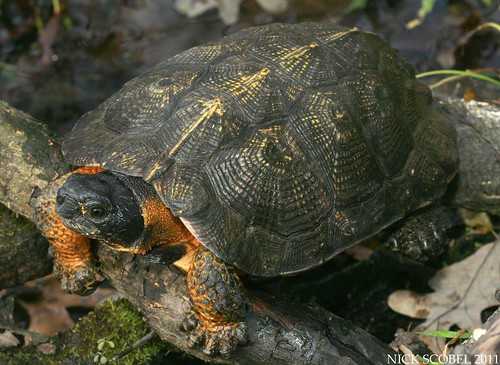
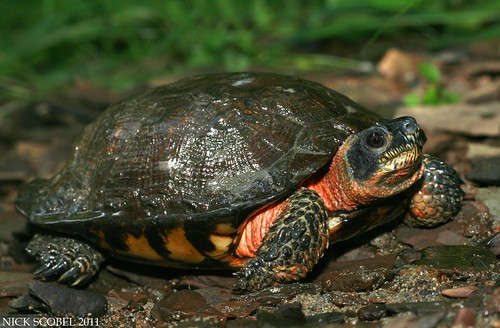
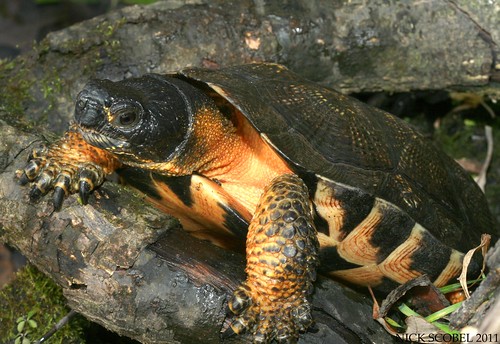
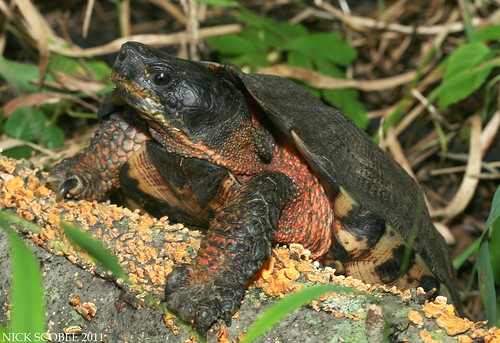



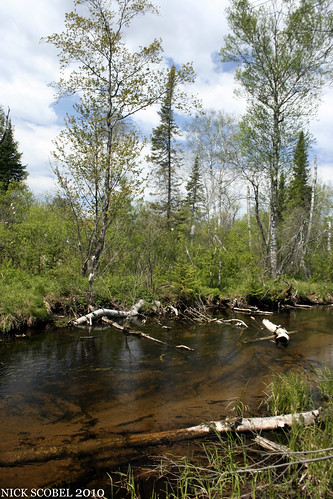

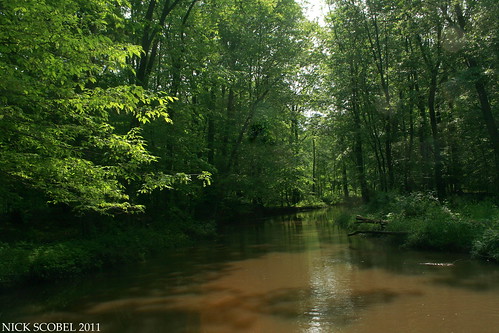
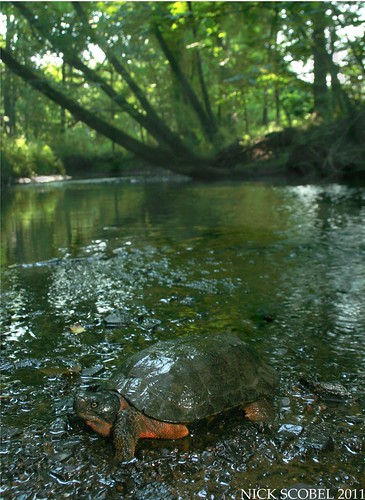
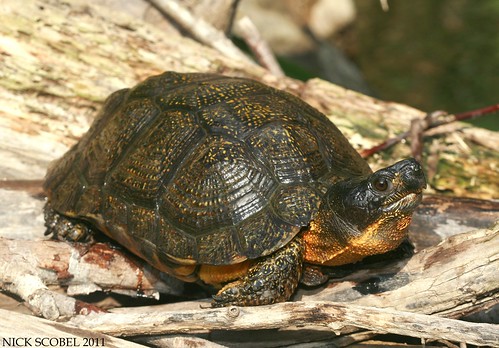
Sometime we should go to the area they were supposedly seen recently in Ohio and see if we can find them there. It'd be interesting to see which of these two types they more closely resembled.
ReplyDeleteThose Jersey woods are fugly. I checked out the Ohio area a few years ago and spoke with the guy who has come across one (more?). I am pretty skeptical about there being a viable population there for a number of reasons. It is definitely worth exploring and possible, but I would think there would be a lot more sightings if they were there.
ReplyDeleteNice write-up, great pictures. Keep up the good work.
ReplyDelete